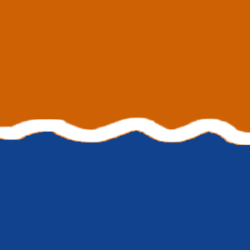Force 4 winds, and near-freezing temperatures? Sounds like a great day for a trip!
I was pleased that two long-time clients agreed to join me on a cold November day’s journey from Inwood to the Bronx Kill last weekend. It’s one of my favorite local paddling trips, and the brisk temperature and wind made the trip, which is normally a bit of a lazy-river trip, into something more adventurous.
The Bronx Kill is a narrow creek that separates the northern side of Randalls Island from the Bronx. It’s a narrow passage, requiring portage at low tides, connecting the Harlem River with the East River, just above Hell Gate. The eastern end affords one of my favorite waterborne views in the city, looking out on the upper East River.
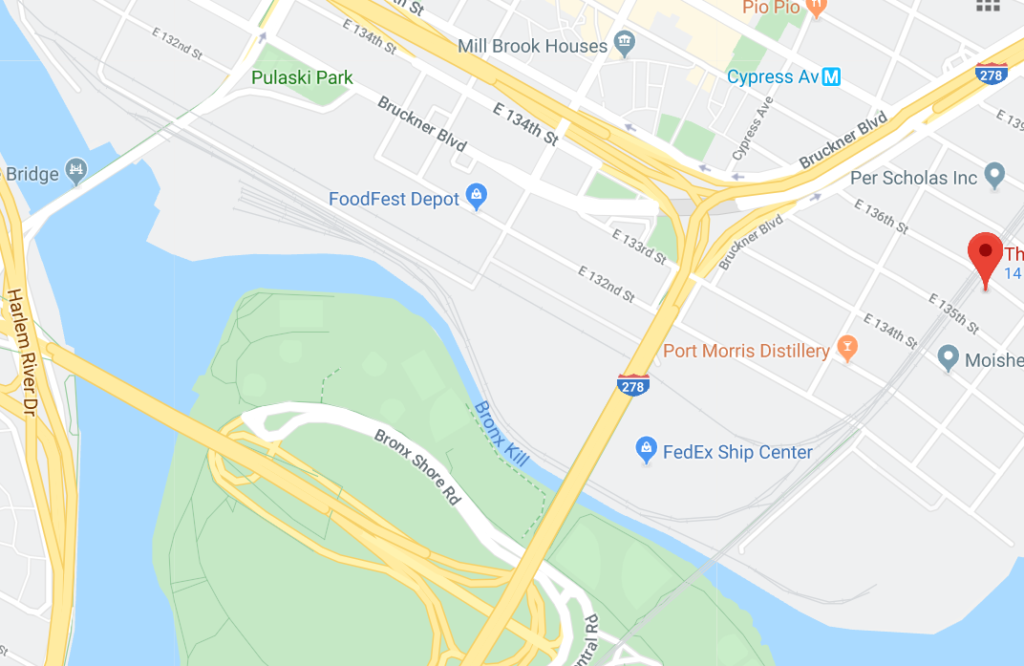
We set out from Inwood, paddling into a stiff F4 headwind from the NNE for about a mile with plenty of flood current. Not far out on the river, the collision of wind against current made for some sizable waves, and on another day we might have gone downwind surfing.
In this case, however, the overall distance would be about seven nautical miles each way, longer if we opted to venture out and around the Brother islands. Once we passed under the railroad bridge into the Harlem River, we were sheltered from the wind, and enjoyed a quieter paddle for about a mile.
Under the Henry Hudson Bridge, past Muscota Marsh and the Columbia “C”, site of the old Johnson Ironworks, then under the Broadway Bridge and turning south past the MTA railyard, we paddled. By then, the wind had subsided just a bit, and in any case was a tailwind, and we continued on past Peter Sharp Boathouse, the Washington and Hamilton Bridges, and High Bridge.
The Harlem River is a the most bridged waterway in New York City, as far as I can tell. Its history is curious, since until the nineteenth century it wasn’t really navigable; the area between the Hudson and the Broadway Bridge was more of a creek, one that was deepened and partially straightened out when Marble Hill was separated from Manhattan. The Harlem up to that point was more of a narrow, nearly-dead end tidal canal.
As it happened, I was at a local Revolutionary War re-enactment the next day, and picked up a printout of the area from that period. Look closely, and you’ll see how much more serpentine the water flowed back then.
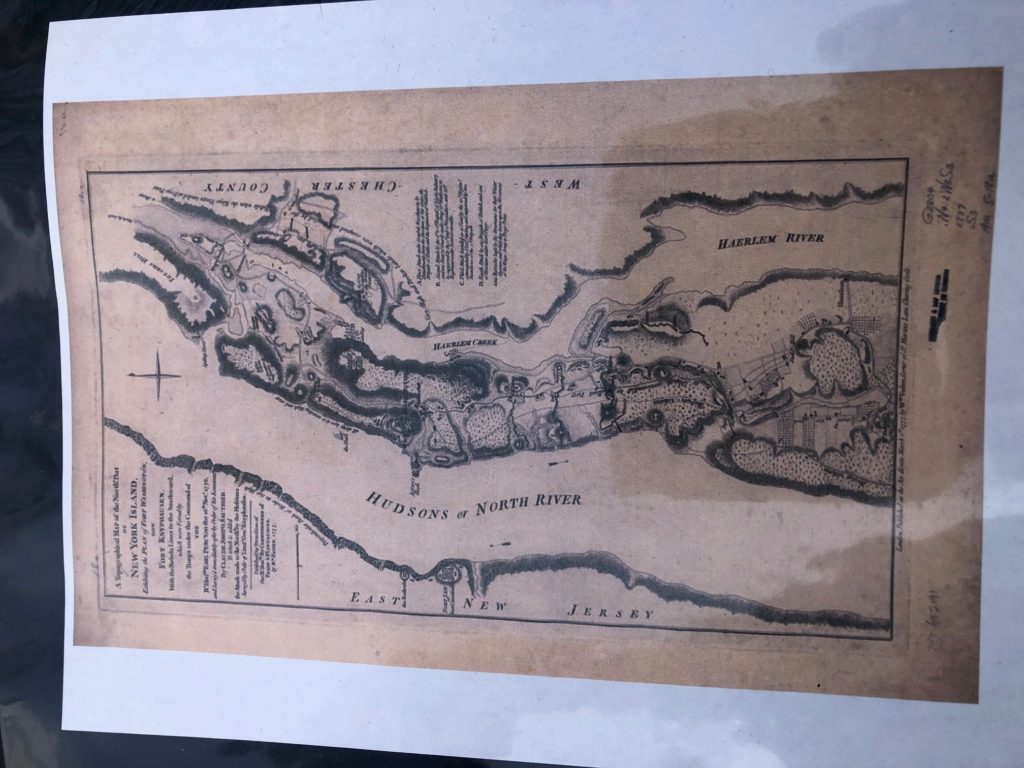
We paddled down, past various other bridges, eventually arriving at the NYPD marina on the northwestern corner of Randalls Island. At that point, we entered the kill, and paddled along its mix of industrial and bucolic scenery, until we came to the railway and highway bridges at the end.
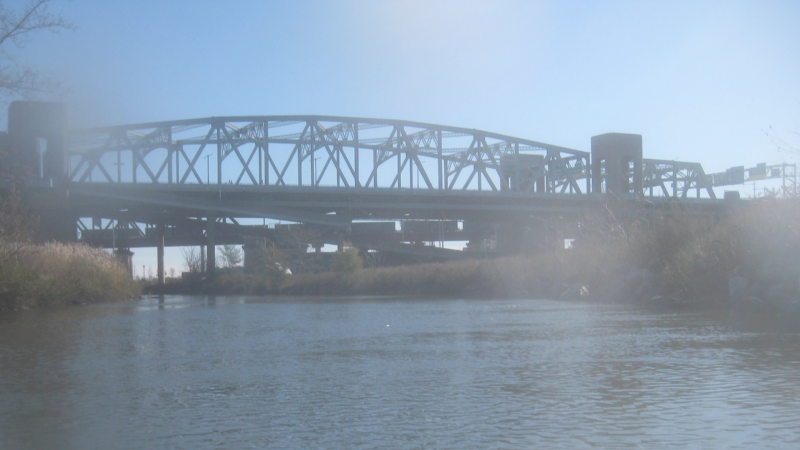
The Triboro (now RFK Jr.) bridge and Amtrak railway bridge extend over the kill, as well as a nice foot bridge connecting the island and the Bronx.
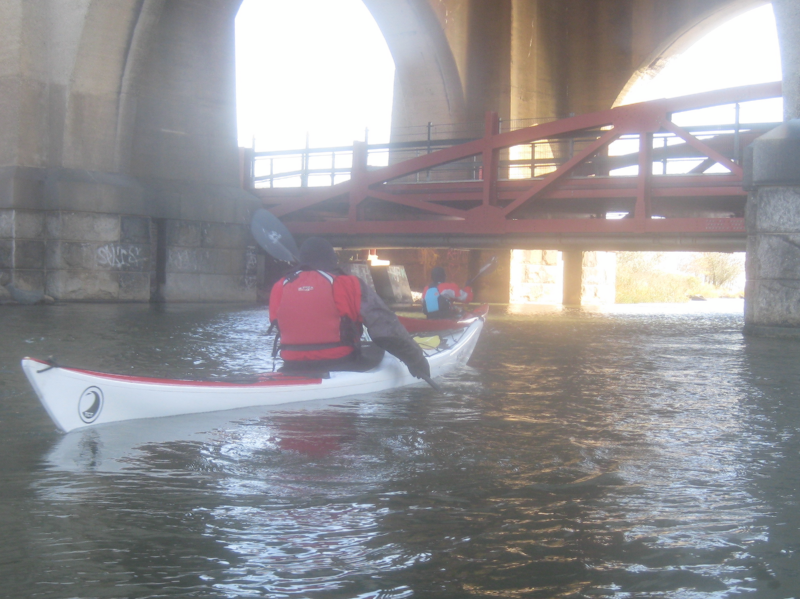
We paddled out to the mouth of the Kill, and contemplated cross further out to the Brothers. However, that would have exposed us to a strong wind abeam, and the shipping channel looking a bit busy with traffic. We opted instead to turn around and find a place for lunch.
We paddled back up the kill, then down the Harlem a bit more, and ended up having lunch in Little Hell Gate Park. A large marshy area has formed in the inlet separating what used to be Wards Island from Randalls Island, when the eastern end of the passage separating the two – the “Little” Hell Gate – was filled in to build a water treatment plant.
After a bit of rest, re-hydration, and use of facilities, we set out again, with plenty of current on our side, but a steady headwind most of the way back.
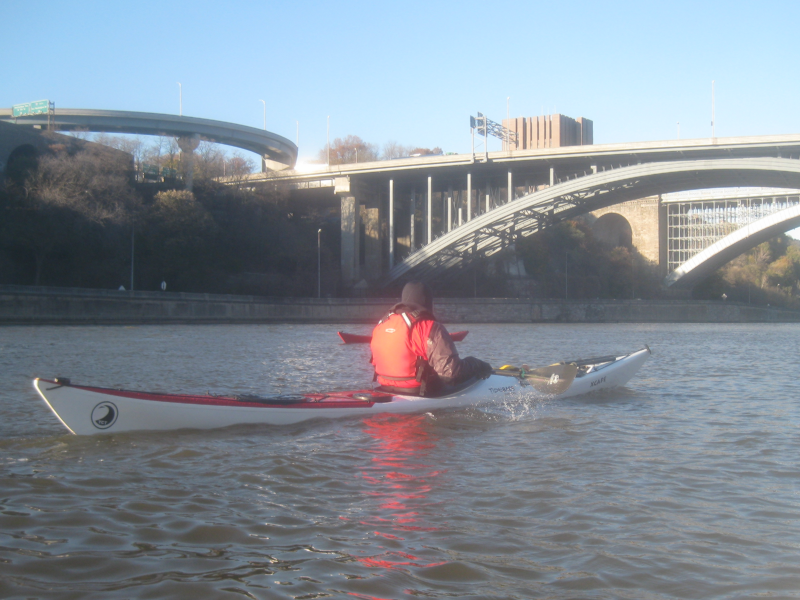
The trip was mostly uneventful. We were just paddling, seeing again the sights we’d seen before. The entire day had been free of traffic on the river, except for a Circle Line boat we saw pass by at lunch, and then the Manhattan II, a regular tour from the Classic Harbor Line.
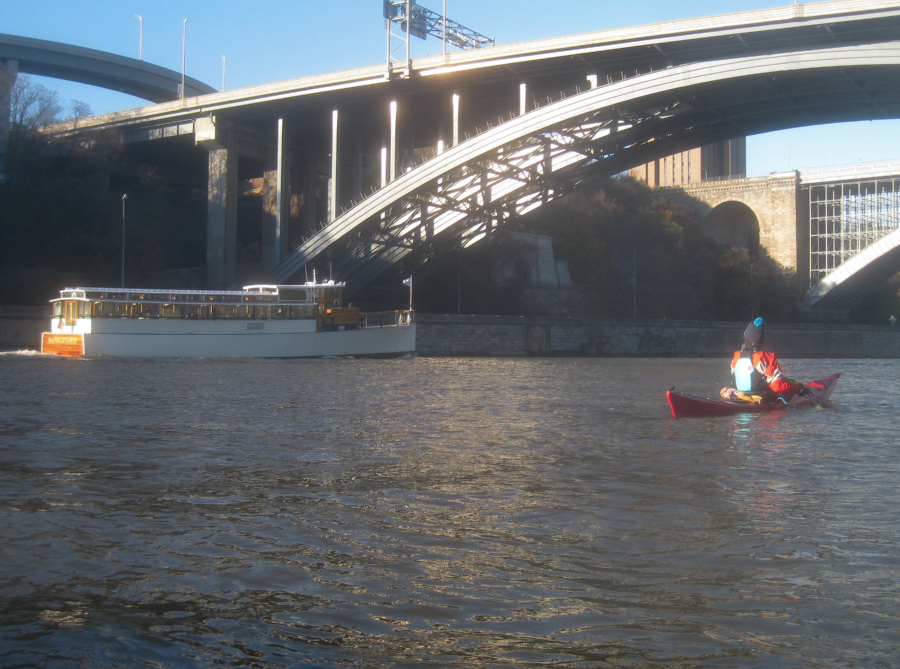
One thing about paddling in New York City, you’re sure to be in other peoples’ scrapbooks!
As we came around the the Broadway Bridge, we were once again sheltered from the wind, and enjoyed the remaining mile or so to the Hudson. We were a little concerned because we could see big white waves on the Hudson, in the distance, but in the end they turned out to be farther out in the channel.
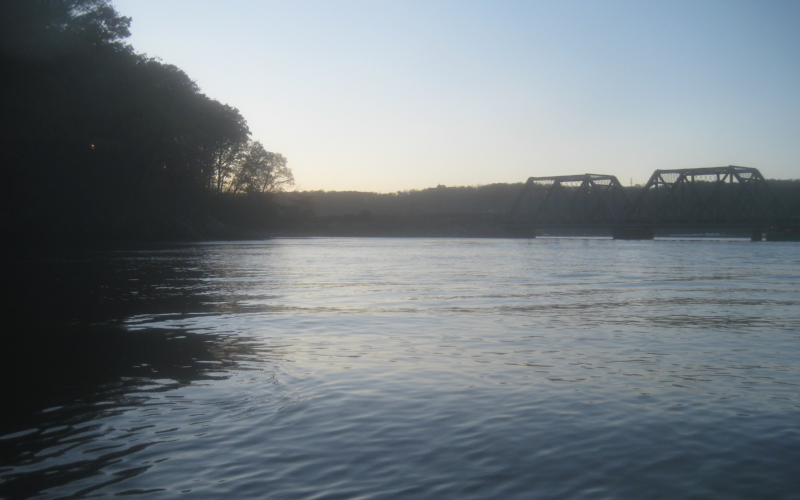
The last mile was uneventful, and with plenty of current, we arrive back where we started, unloaded and cleaned boats, and went our separate ways.
